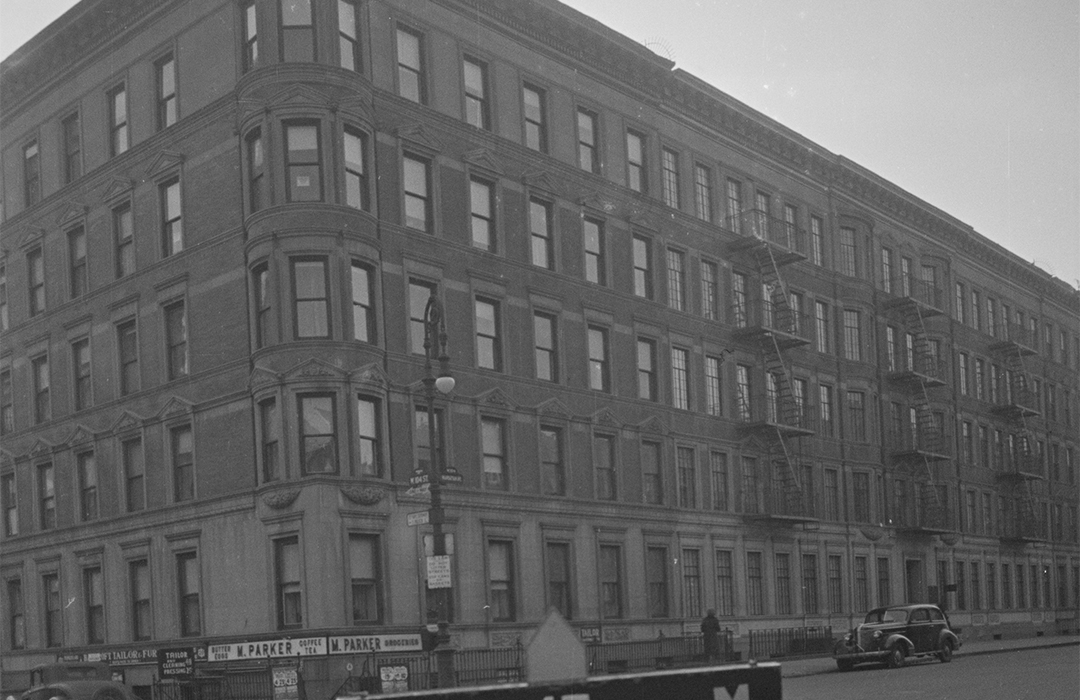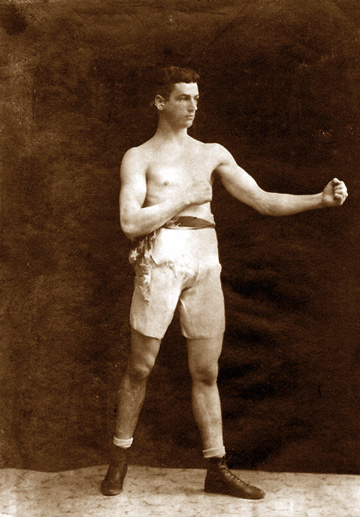
82 Manhattan Ave. aka 20 West 104th Street
by Tom Miller
Real estate developer Robert Dick filled the Manhattan Avenue blockfront from 103rd to 104th Street in 1895 with three apartment buildings. They were harmoniously designed by Martin V. B. Ferdon in the Renaissance Revival Style. The two end buildings, 82 and 74 Manhattan Avenue, were mirror images of one another. Their porticoed entrances opened at 20 West 104th Street and 19 West 103rd Street, respectively.
Robert Dick and his family moved into 20 West 104th Street. (They would still be living here on September 12, 1911, when Mildred Willetta Dick was married to William Griffin Jorgenson at the Scotch Presbyterian Church on 96th Street and Central Park West.)
The residents in the building were, for the most part, professional. Among the first to move in was Dr. Emma D. Wilcox, an early female physician. Dr. Wilcox was secretary of the New York Homoeopathic Union and an Adjunct Professor of Mental and Nervous Diseases at the New York Medical College and Hospital for Women. She would remain here at least through 1905.
Frederick H. Harris arrived in New York City from Chapel Hill, North Carolina, in July 1899. He was a clerk with the Continental Tobacco Company. Although just 20 years old, he was affluent enough to afford at least one servant. On Christmas Eve that year, Harris went into the bathroom but did not emerge. The New York Times reported, “The bathroom had been locked for an unusually long time, and upon the door being forced by a servant, Harris’s body was discovered face down in the tub, the head being completely submerged.” The New York Sun added, “The police believe that the young man had a fit while bathing and was drowned.”
(Incidentally, Kid McCoy would have nine more wives.)
Other initial tenants were artists Harold Haven Brown and his wife, the former Florence Bradshaw. Born in Malden, Massachusetts, in 1869, Harold Brown attended the Lowell School of Design, the Massachusetts Institute of Technology, and the Massachusetts Normal Art School. After graduating from the latter, he studied at the École des Beaux-Arts in Paris and at the Académie Julian. He studied museum work at the Louvre, the Museum of Luxembourg and the Musée de Cluny. He and Florence were married in November 1897. Harold’s wide-flung resume included painter, illustrator, mapmaker, author, and teacher. The couple would later help found the Provincetown Art Association and Museum.
A decidedly untypical resident was Charles McCoy. Born in Moscow, Indiana, he married Charlotte Piehler in 1895. The couple divorced in 1898, and Charles, who was by now known in the boxing world as Kid McCoy, moved into the newly built apartment house. (Incidentally, Kid McCoy would have nine more wives.) On August 19, 1898, The Sun reported, “Kid McCoy returned to town yesterday from Long Branch and went directly to his residence, 20 West 104th street. He is looking remarkably well. McCoy intends to take a rest and will not go back to Saratoga until next Tuesday.” His trip to Saratoga was to fight World Heavyweight Champion James Corbett. (Corbett defeated McCoy, however popular sentiment was that the fight was fixed.)
Kid McCoy’s star would eventually crash. He left New York for California shortly after World War I, where he appeared in silent films. Addicted to alcohol, he was arrested in 1924 under suspicion of murder and armed robbery. He was sent to San Quentin prison for the robbery charge. He committed suicide in 1940.
Rutherford Hamilton Towner was an attorney for the American Surety Company. He shared an apartment with his mother and sister. The family maintained a summer home in Kent, Connecticut. (The Sun said they were “of an old Connecticut family.) In 1901, Towner hired 23-year-old Hermione Brouleben as his stenographer. She lived, coincidentally, nearby at 76 West 105th Street. The close employer-employee relationship sparked a romance. On August 9, 1906, The Sun reported, “Friends of Rutherford Hamilton Towner…a few days ago received cards announcing his marriage to his stenographer.”
An interesting resident was Missouri Ann Hawkins, who shared an apartment with her daughter, Mary L. Hawkins. Missouri was born in Oneida, New York, on April 23, 1815, to well-to-do parents. Her father, Norman Kibbe, was a respected merchant and politician, and her mother, Electra Whitney, was “of a prominent family,” according to The Sun. She married William W. Hawkins, a dry goods merchant, and the couple came to New York City in 1857. Hawkins died in 1890.
Because Missouri’s father was prominent in the community, when Marquis de Lafayette stopped in the hotel of her hometown in 1825, the ten-year-old was presented to him. She told a reporter from The Sun in 1915, “I put on my best dress and went to the hotel, where I shook hands with the great man. And what do you think? I danced a minuet with him.”
On her 100th birthday, April 23, 1915, a reporter from The Sun asked her to “relate her impressions.” Among them, she said, “The Democratic party is the best party,” “Grover Cleveland was the best President in the past one hundred years,” and “Billy Sunday is doing good work, as far as it goes.”
The close employer-employee relationship sparked a romance.
Two years later, the newspaper prepared to send a reporter to call on Missouri Ann Hawkins’s 102nd birthday. Unfortunately, the colorful woman died just ten days before the date.
Resident John Joseph Burns worked as a salesman. The 57-year-old lived here on July 24, 1941, when he made a sales call in Peekskill. Afterward, he had a drink. Or more. Burns had a ticket back to New York and began walking to the train station. The Peekskill Evening Star reported, “he fell on Railroad Avenue and lacerated his head so severely that he had to be treated at the Peekskill Hospital.” While there, Burns’s humiliation was worsened when Officer Milton Booth charged him with public intoxication.
Arthur and Ann Golly lived here in 1945. On the night of November 7 that year, the couple walked to a party at the apartment of George Senevolos and his wife, who lived at 8-10 West 104th Street. The Gollys, perhaps, had an argument during the evening, and Arthur left early while Ann remained. According to Mrs. Senevolos, at around 1:30 in the morning, Ann told her, “I think I’ll go to the roof and jump off.” The following day, The New York Sun reported, “The body of Mrs. Ann Golly, 33 years old, of 20 West 104th street, was found early today at the bottom of an air shaft between 8 and 10 West 104th street.”
Martin V. B. Ferdon’s reserved Renaissance Revival structure has survived remarkably intact after 130 years.
Tom Miller is a social historian and blogger at daytoninmanhattan.blogspot.com



